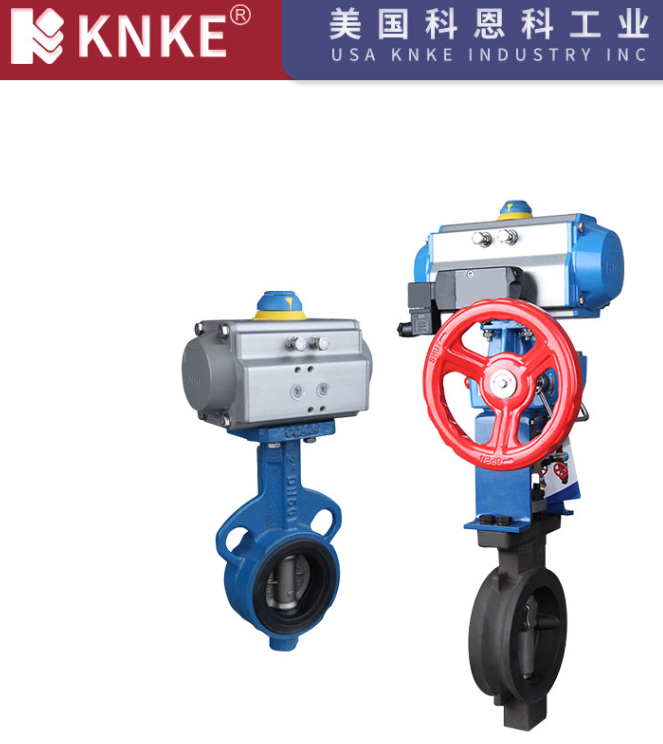Common Pneumatic Valve Failures and Troubleshooting Methods
Pneumatic valves are critical actuating components widely used in industrial automation systems across industries such as chemical processing, power generation, metallurgy, and water treatment. Their operational reliability directly impacts the stability and safety of the entire system. This article outlines common pneumatic valve failures, analyzes their causes, and provides effective troubleshooting methods to assist maintenance personnel.
1. Common Failure Types and Causes

1.1 Solenoid Valve Malfunction
Symptoms: Failure to actuate, air leakage, coil burnout
Possible Causes:
- Coil short circuit or open circuit
- Valve spool stuck due to debris
- Aging or damaged seals
- Blockage caused by contaminants in the air supply
1.2 Pneumatic Valve Plate Fails to Open
Symptoms: Valve does not respond or opens sluggishly
Possible Causes:
- Mechanical blockage due to foreign objects or rust
- Actuator failure (e.g., damaged cylinder or diaphragm)
- Insufficient air pressure
- Worn gear or drive shaft
1.3 Pressure Regulating Valve Failure
Symptoms: Unstable output pressure, failure to regulate
Possible Causes:
- Broken or fatigued regulating spring
- Poor spool sealing
- Damaged internal diaphragm
- Faulty setting mechanism
1.4 Water Replenishment Failure (for specific valve use cases)
Symptoms: Inability to replenish water or control liquid level
Possible Causes:
- Sensor signal interruption or malfunction
- Actuator not responding
- Blockage inside valve body
- Control logic or PLC programming error
1.5 General Issues
- Air Supply Problems: Low pressure, supply interruption, moisture or impurities in the air
- Seal Leaks: Leaks from valve body, fittings, or actuator
- Control Signal Issues: Signal loss or solenoid valve not receiving electrical signal
- Component Wear: Degraded seals, springs, or diaphragms
2. General Troubleshooting Procedures
To quickly identify and resolve issues, follow these structured troubleshooting steps:
2.1 Air Supply Check
- Ensure pressure meets the rated working range
- Inspect for leaks or blockages in pipelines
- Verify proper operation of filters, regulators, and lubricators
2.2 Electrical Signal Test
- Use a multimeter to check solenoid coil resistance
- Inspect control wiring for continuity and correctness
- Verify the accuracy and presence of control input signals
2.3 Mechanical Inspection
- Manually operate the valve to detect sticking or obstruction
- Disassemble actuator to check piston, diaphragm, or spring integrity
- Inspect for foreign materials or corrosion
2.4 Seal Leak Detection
- Apply soapy water or use leak detection tools on key areas
- Replace aged or deformed sealing components
3. Targeted Repair Solutions
Solenoid Valve Issues
- Replace damaged coils
- Clean and lubricate valve internals
- Replace worn-out seals
Valve Plate Obstruction
- Remove debris
- Lubricate transmission parts
- Replace worn gears or shafts
Pressure Regulator Malfunction
- Recalibrate pressure settings
- Replace damaged springs or diaphragms
- Clean internal components and filters
Water Replenishment Failures
- Check and calibrate level sensors
- Repair or replace control circuit
- Clear blockages in the valve body
4. Maintenance Recommendations
To reduce failure rates and extend service life, establish a regular maintenance schedule:
- Clean air treatment components (e.g., filters, lubricators) to prevent contamination
- Check fasteners and lubricate actuators and transmission parts
- Periodically replace wear-prone components such as seals and diaphragms
- Keep records of operating conditions, maintenance activities, and fault history for analysis
The reliable operation of pneumatic valves depends on clean air supply, robust control systems, and consistent maintenance. With a structured approach to troubleshooting and targeted repair actions, most common issues can be resolved efficiently. Implementing a proactive maintenance strategy will further enhance the system’s reliability and safety.
